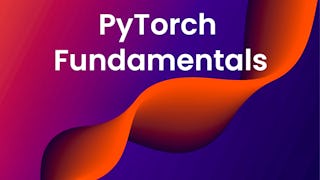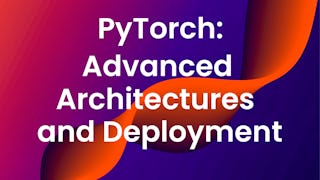Master advanced PyTorch techniques to build high-performing, efficient deep learning models.
In this course, you’ll expand your skills in hyperparameter optimization, model profiling, and workflow efficiency. You’ll experiment with learning rate schedulers, tackle overfitting, and use automated hyperparameter tuning with Optuna to boost model performance. Learn how to design flexible architectures, measure model efficiency with the PyTorch Profiler, and make the most of your compute resources. You’ll also dive into real-world applications using TorchVision for computer vision tasks like loading, transforming, and augmenting image data, and leveraging Hugging Face for natural language processing. You’ll apply transfer learning and fine-tune pre-trained models to adapt them for new problems. By the end, you’ll know how to train smarter, optimize deeper, and build PyTorch models ready for production-level deployment.












